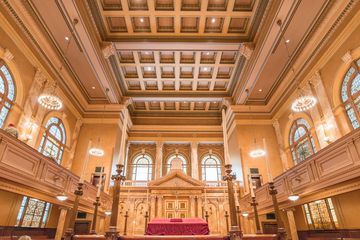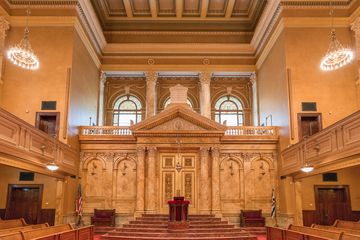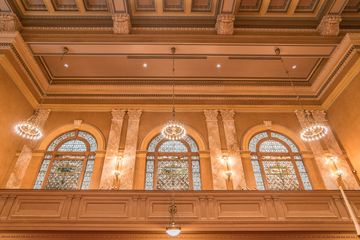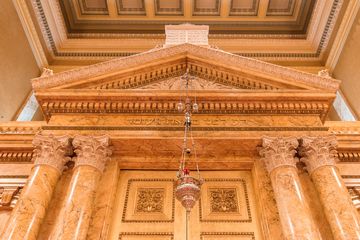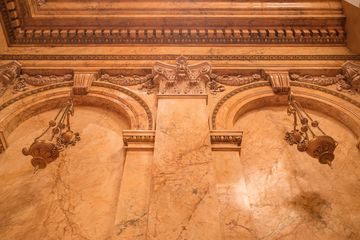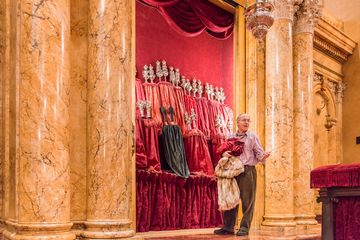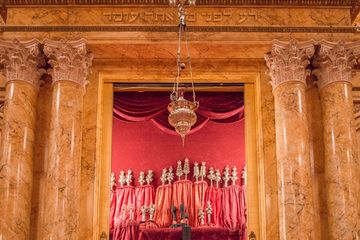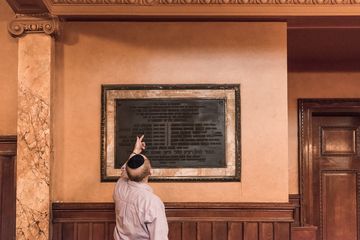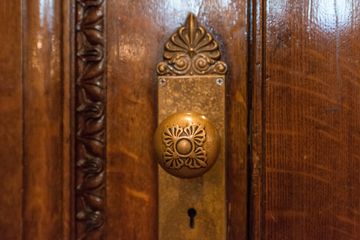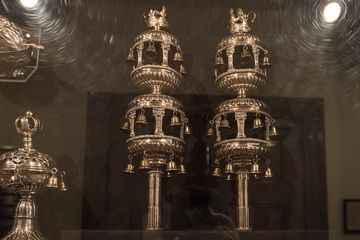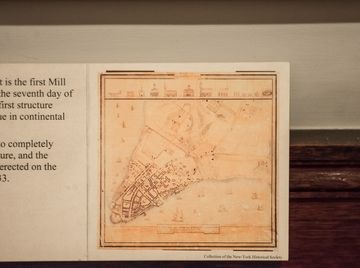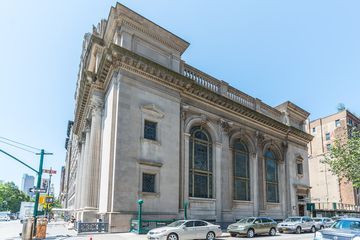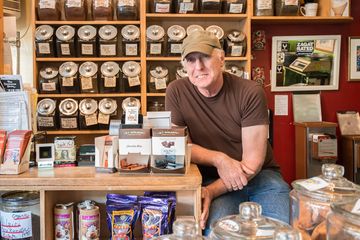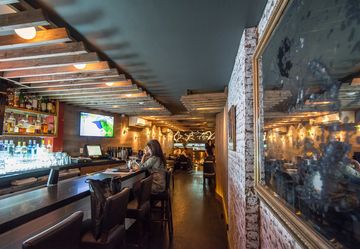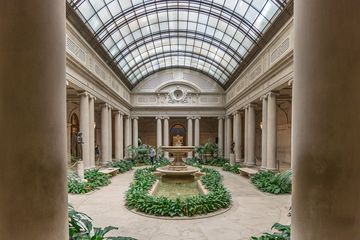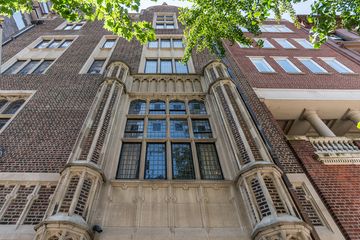
Every year of my childhood, my parents would take my brothers and me into Manhattan to watch the Thanksgiving Parade. We would meet friends and relatives and congregate on the steps of what we referred to as the Spanish Portuguese Temple. This synagogue held a special meaning to us as my aunt and uncle were married there in 1949. When I entered through their side street door, and stepped inside the sanctuary in the summer of 2015, I turned to Hazzan-Rabbi Ira L. Rhode in awe. He simply looked at me, smiled and said, " Yes, even kids' jaws drop when they enter, and, amazingly, they remain quiet." Having been an integral part of the congregation since 1990, he had seen everyone - including three year olds - held speechless in this magnificent holy space.
Tiffany stained glass windows gentrified the walls with light accentuating their colorful geometric patterns. Original marble steps marbled with history, and the arc opened to crimson cloth-covered torahs, each topped by silver ornaments. On my visit, one was wrapped in black in honor of Tisha b'av.
According to the rabbi, the temple's name references its founders who were largely of Spanish and Portuguese origin and who fled to New Amsterdam from Brazil when it was taken over. In 1654, Congregation Shearith Israel became the first Jewish congregation to settle in North America. Since then, the congregation has occupied five different spaces, catering to a growing following. "They were all built from scratch," the rabbi explained.
In 1730, the Mill House on South William Street was the first, furnishings of which can still be found in the current building. In 1816-17, the congregation decided to rebuild in the same location, allowing for a much larger synagogue. In 1834, the temple moved to Crosby Street as the city flourished. When the Manhattan grid was formed everyone wanted to move uptown, so the next location became 19th Street in 1860 and then in 1897, when Central Park was created and the Dakota went up on West 72nd Street, the Jewish population wanted to be on the West side and found a site that had previously been a duck farm. Since then, this landmark building on Central Park West and 70th Street has stood with its beautiful neo-classical aesthetic. Although the steps are now protected by a gate, thus not allowing anyone to sit on them during the November parade, I continue to cherish my warm memories of years of sharing a seat next to so many special people in my life.
